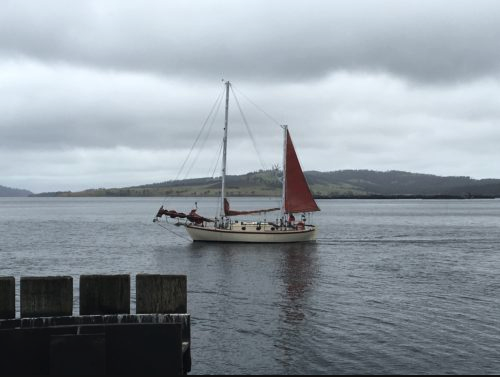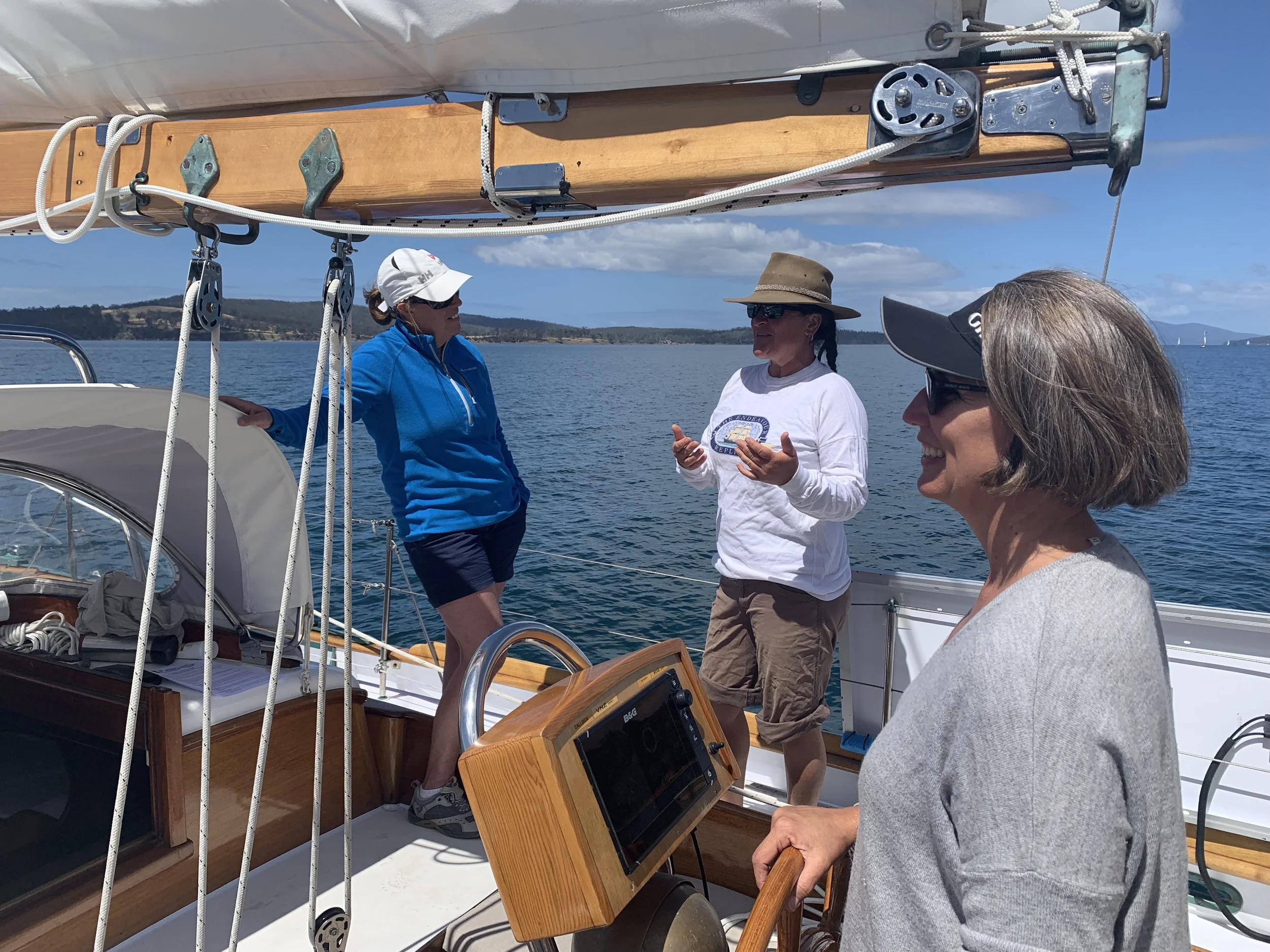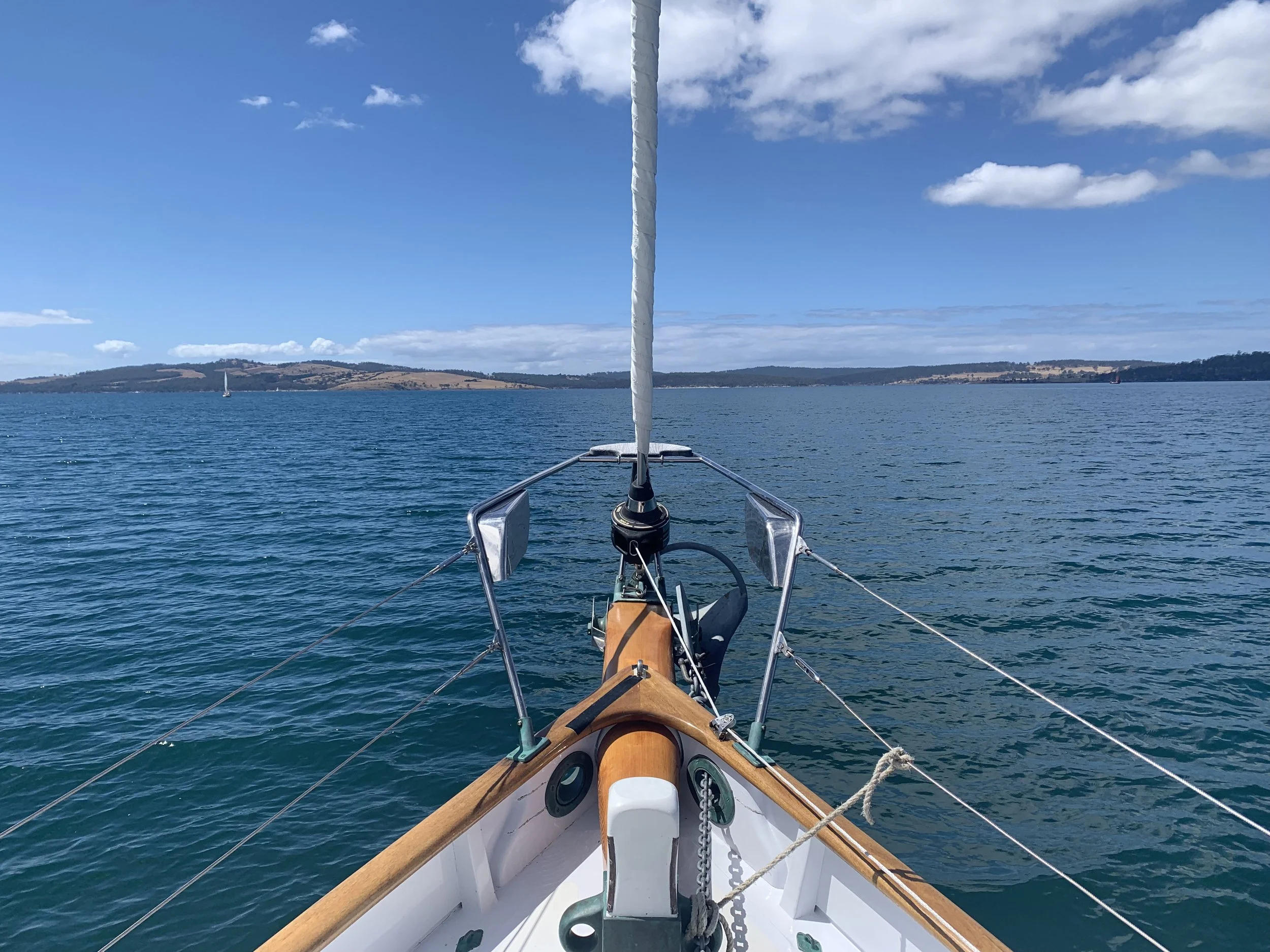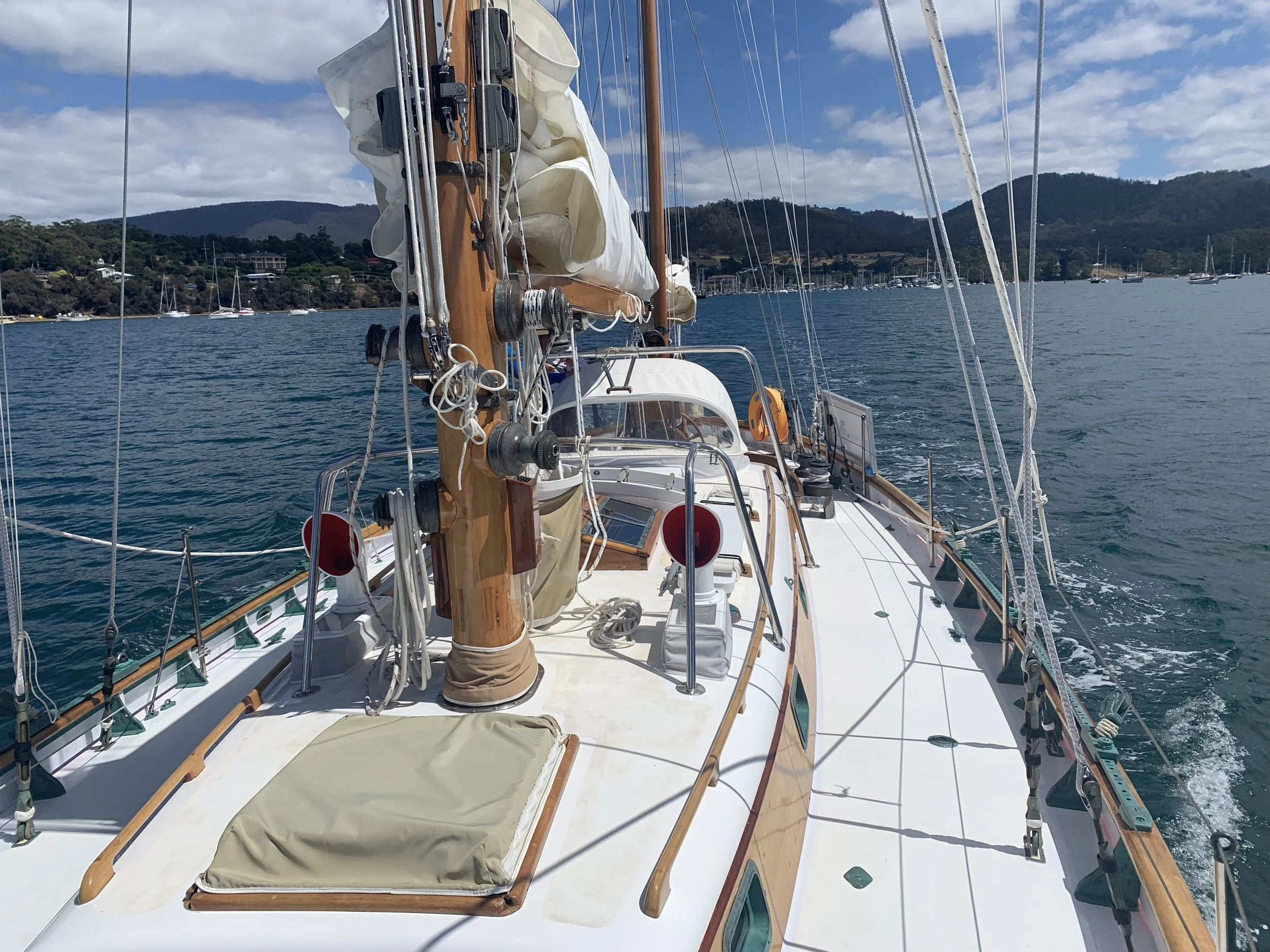Polished Time Capsule Or Beast of the Sea
By Sal Balharrie
DAY TWO - Pursuit Racing D'Entrecasteaux Channel, Tasmania.
The Kettering Wooden Boat Rally 2022 –
if you didn’t happen to make it, here’s what you missed.
Three days of racing – Day One, a Twilight Race to ease into the pattern of all things Tasmanian. Day Two, a longer pursuit race. Day Three, a shorter pursuit race. Conditions: Wind - 8 to 30+ knots from all directions :) Sea state – flat, occasional chop. Temperature – Perfect.
In retrospect, it would have been a fantastic exercise to have tallied the collective age of all boats out on the water over the course of the weekend. However, it was easy to rate the collective beauty and equally the truly wonderful sense of community Kettering has built and maintained and continues to grow. This was one very special gathering of sailing heritage.
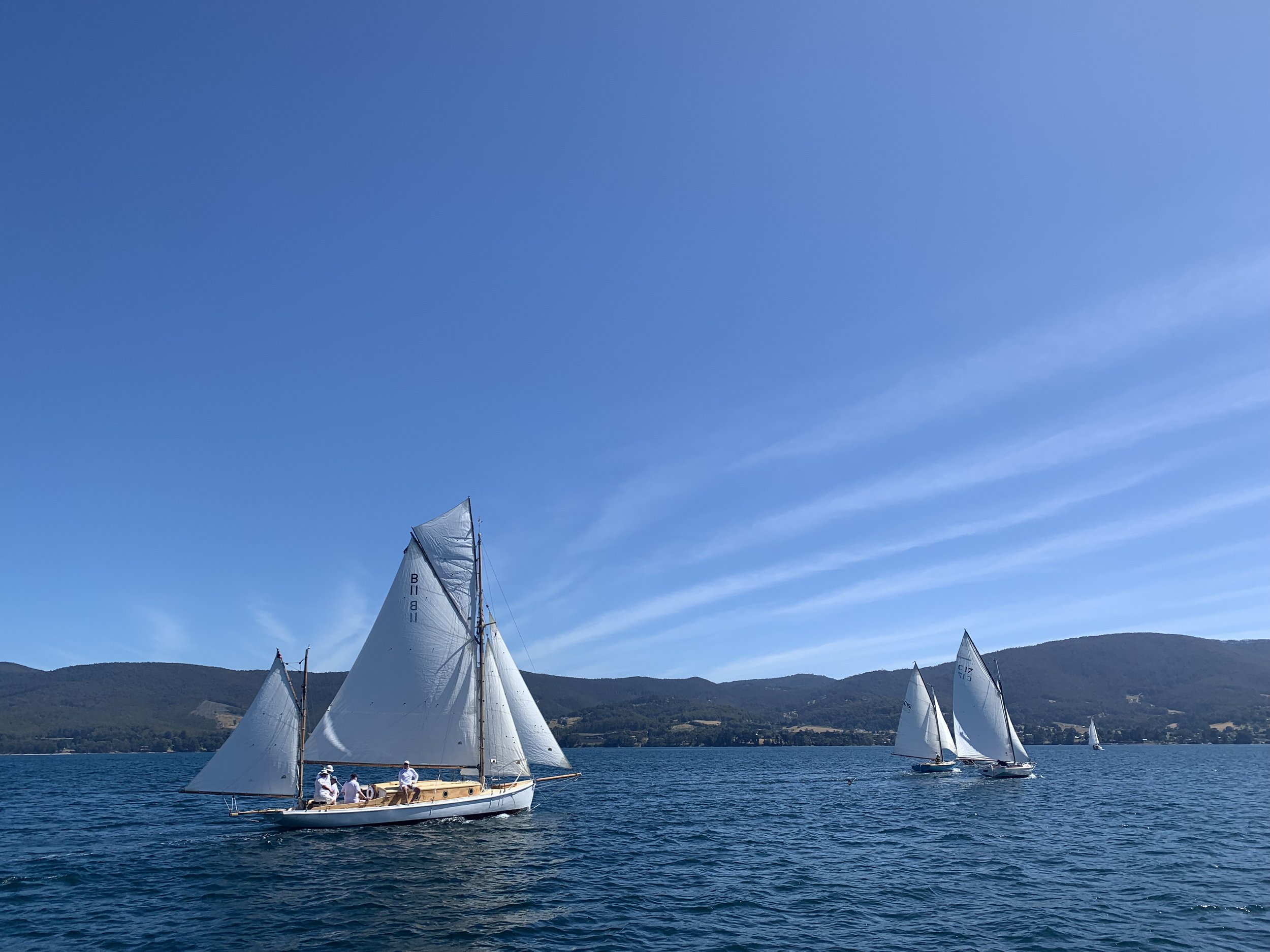



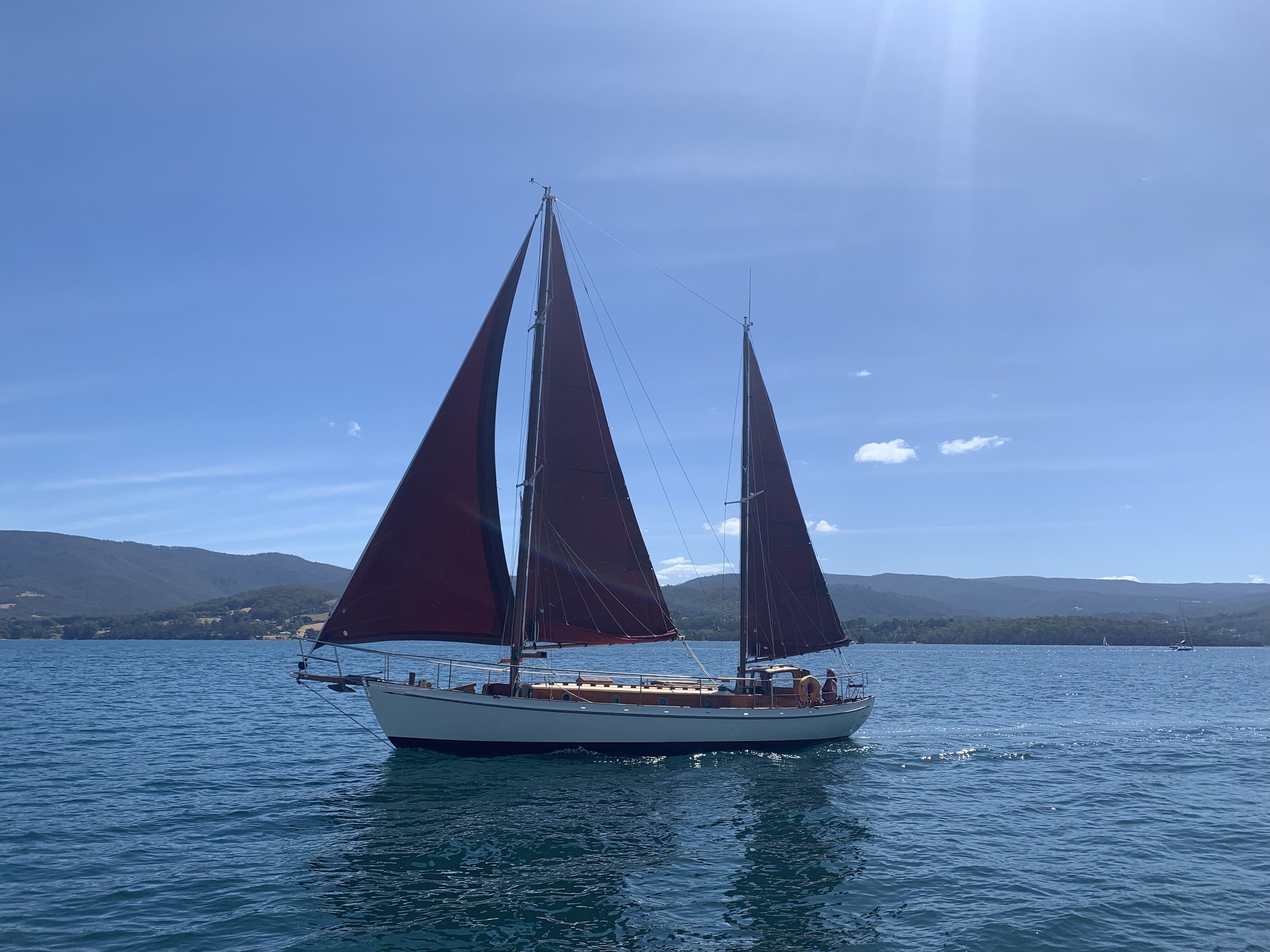
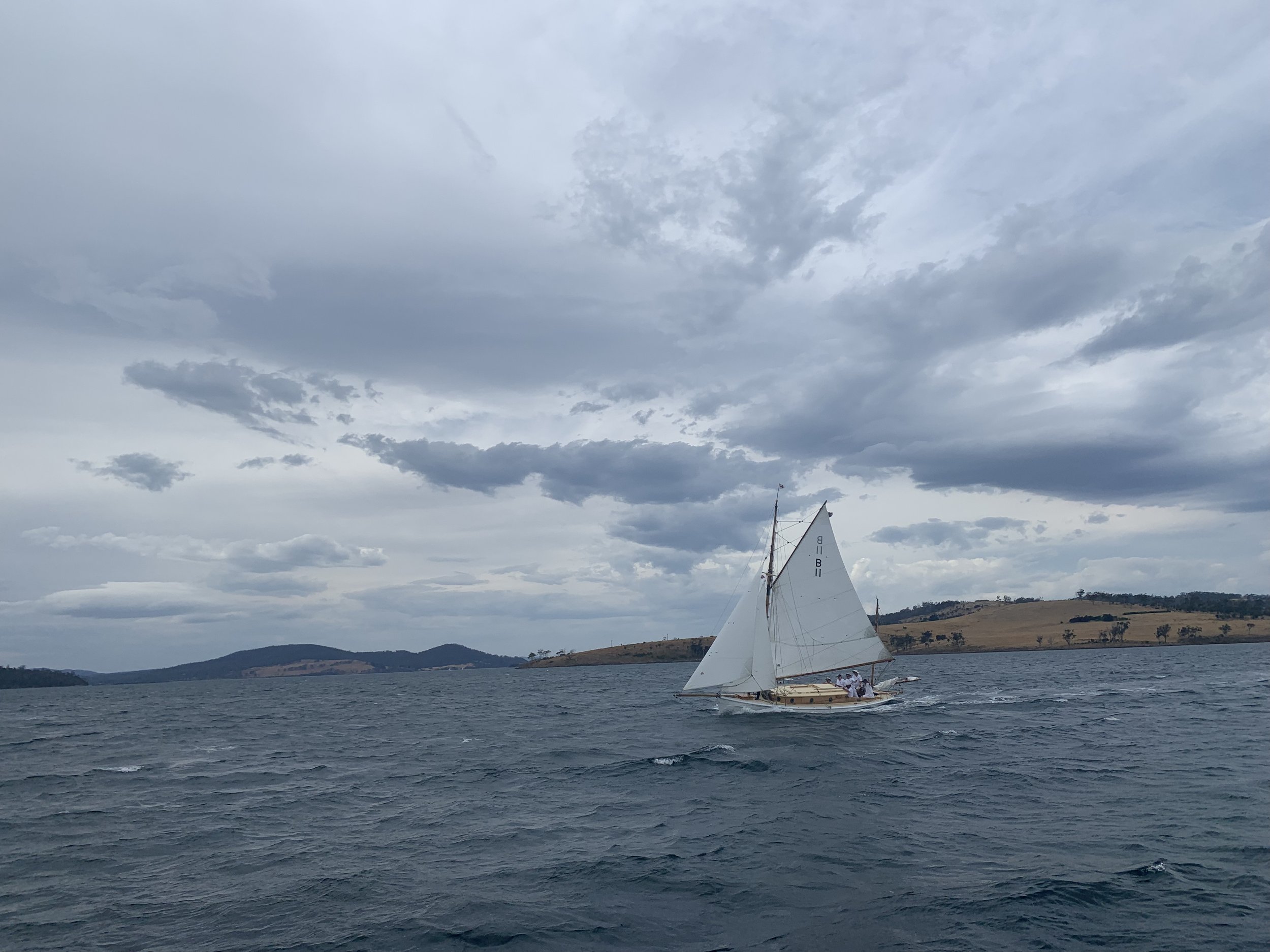
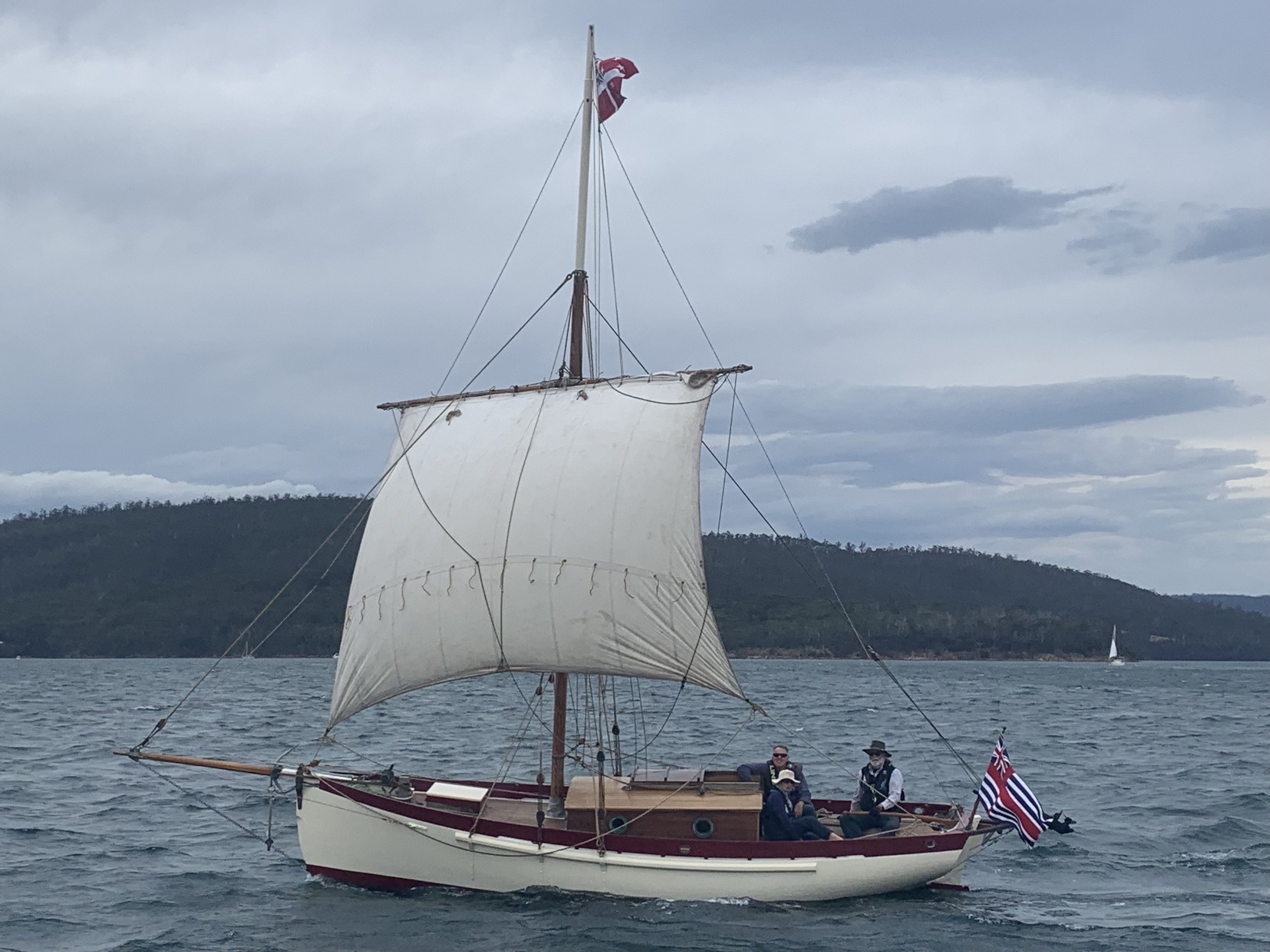
Kettering is a place where you can smell the wood shavings. Here, varnish is thick, history alive and passion is real. Water craft are and always have been, a way of life in Tasmania. Old boats don’t come to Kettering to die, they come here to thrive. To understand what I’m on about, a walk around the marina will connect you to years and years of commercial fishing and recreational racing.
It was Peter Higgs, former Chair of the AWBF, who explained the significant aspects of historical vessels.
‘These boats were either in service to community via recreation - racing and regattas, or via commercial activity. We didn’t have roads, so we delivered to and from, via the sea. But it’s all about how these boats integrated into community. Here boats were our lifeline.’
Day One and 30+ boats head out for a twilight race. The Channel is known for her ability to change and shift and test and she didn’t disappoint. Five pm and we had a steady 30 knots – which would later completely die out, leaving nothing but a mirrored surface.
I’d been invited to sail on HOLGER DANKSE, the poster child of K Aage Nielsen. Affectionately known by current custodian Joy Phillips, as HD, Off Centre Harbour describes the boat as a ‘magnificent double-ender, showcasing Scandinavian design and build at its finest’. HD is strong, heavy, comfortable, and fast - ‘a stunning, fully-furnished cruising boat that can still win races’.
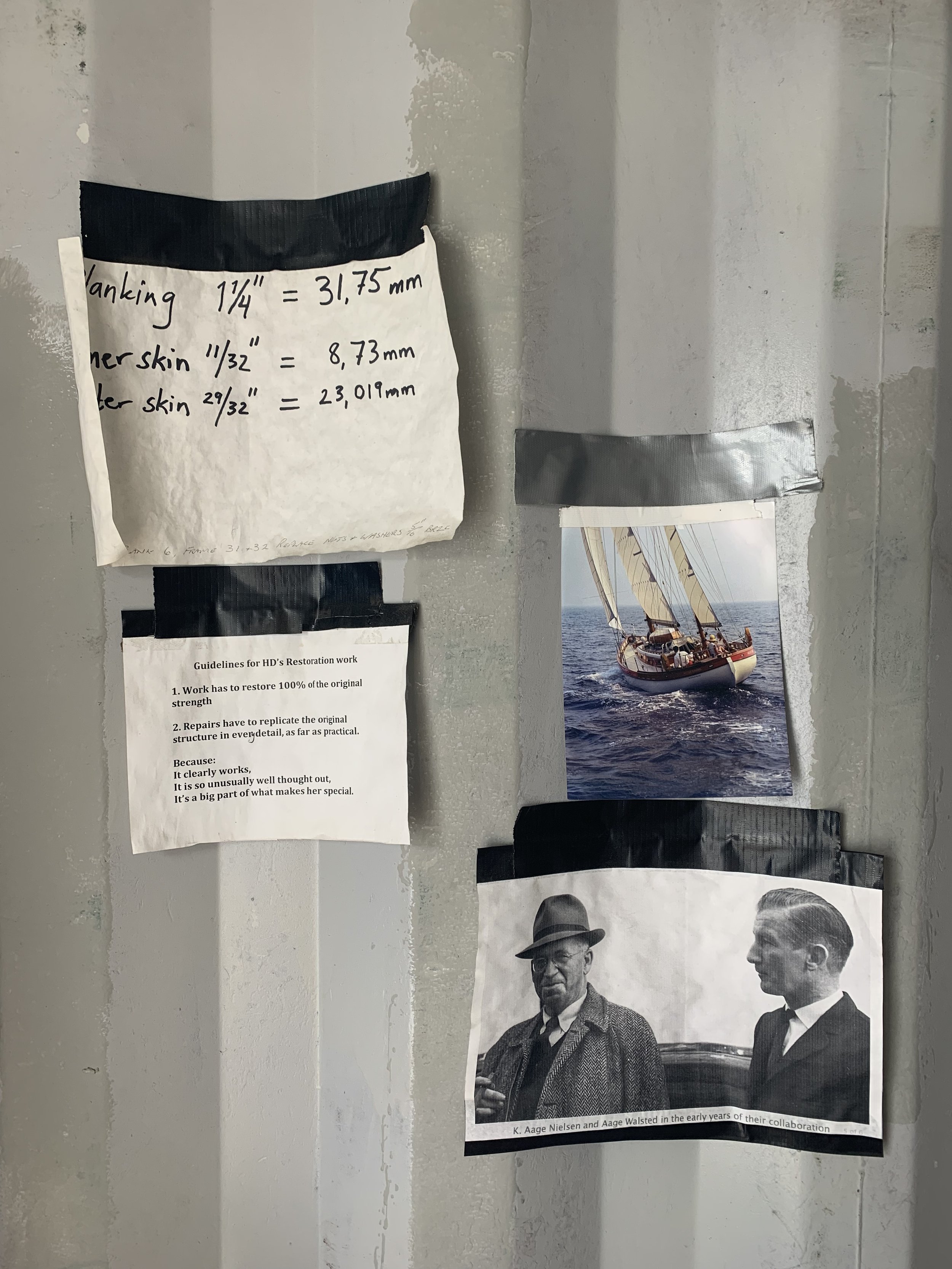
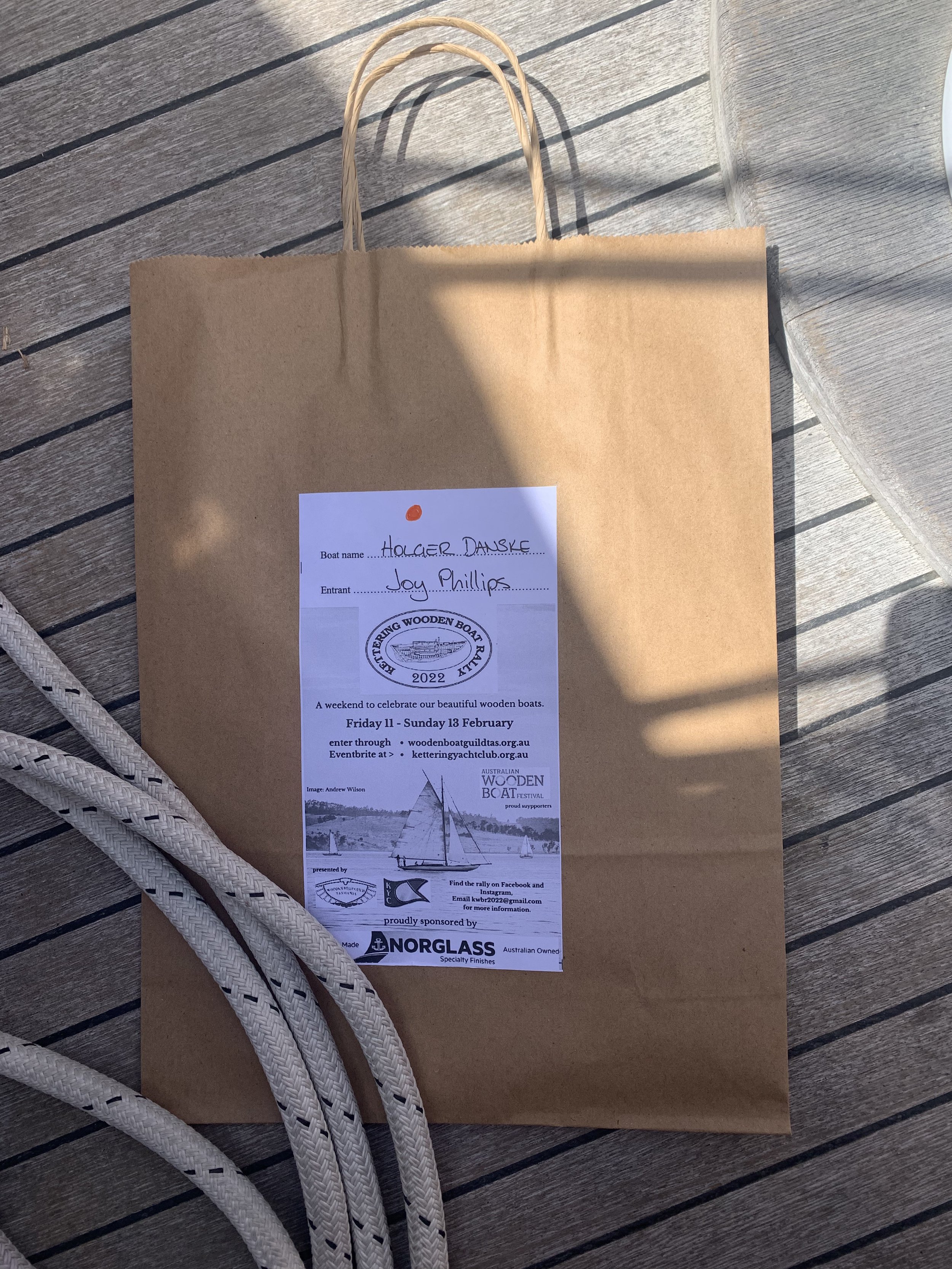
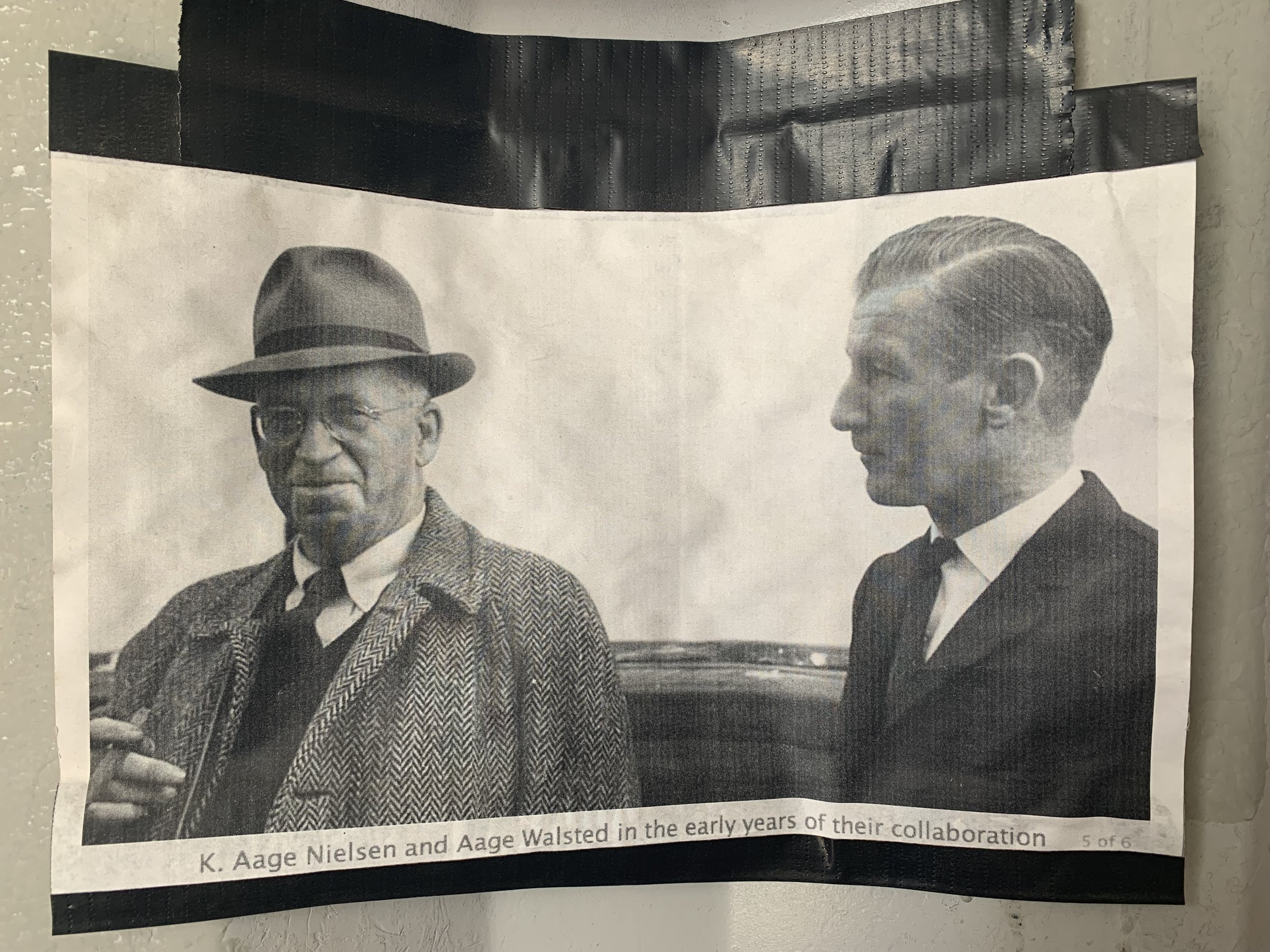
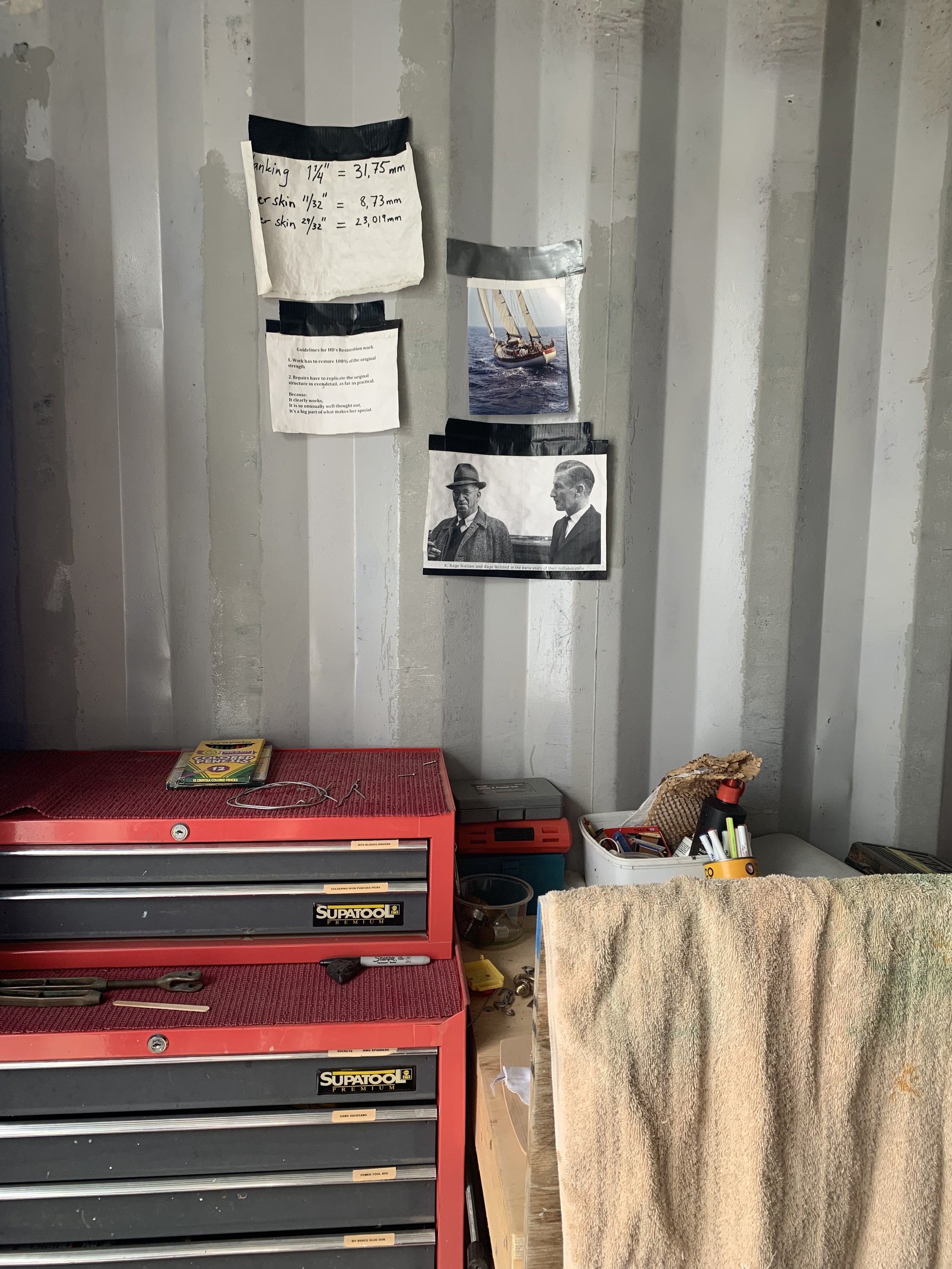
Pre-race, we sheltered over on Bruny, in Barnes Bay and as we did, there was confusion from the crew and race committee over what constitutes the head, or the mouth of a bay. This was soon followed by confusion over laid marks and start lines. Such is local racing and if the banter on VHS 73 was anything to go by, the Race Committee was having a good time.
But such muddles are simply about the process of sailing. What was more interesting to me, was confusion over what it means to race a classic boat. The conversation began in our cockpit and expanded across the weekend in conversations with others.
Q. How far should Classic boats be pushed?
Some said hard.
Others rolled their eyes.Q. Are they highly polished pieces of furniture?
Of course they are!
Others rolled their eyes.
Q. Are they time capsules?
Yes! Precious moments in history to be protected.
Others rolled their eyes.
Back to the eminently sensible Peter Higgs on racing old boats:
“You’ve got to push them to the limit.
You’ve gotta drive them.
They need to be pushed.”
I’d arrived on HD as tactician – never an easy gig when given the shifty nature of a locale and thus my lack of local knowledge. In any case tactician was a glorified term – I was there to support my friend as she helmed her first race in 25 years. My job was to stand behind her, have her back and coax her, nudge her, just a bit, towards the land of competitive racing. I think I was successful :)
I was reminded of a remark by fellow SWS Editor Mark Chew, a memory from a sports master who once said – ‘We’re not here to beat each other, we’re here to pace ourselves on the road to perfection’ - and that works for me.
And there were others out there doing the same – pushing their boats hard – not towards the slippery hope of a win – but simply towards a better performance, towards the land of personal best, conscious of being custodians of the craft beneath their feet.
DAY 3 The GYPSY boys head out for a win.
Such as the boys on GYPSY, who cleaned up on Day 3 and who’ve been cleaning up for the last 100 years. GYPSY is a 36 foot gaff rigged yawl by one of Tasmania’s most famous yacht designers, Alf Blor.
“GYPSY is the only one of that 36-foot design and the only one with a racing rig, so she’s unique,” Steve says. Built from Huon Pine with solid Oregon spars, GYPSY joined the Knight family in 1918 when she was bought by Steve’s uncle’s Syd and Jack. She was unfinished and unnamed, and Steve suspects she was named GYPSY because his uncles had itchy feet.
GYPSY was a race dominator on the Derwent in the 1920s and 30s, and holds many titles at the Royal Hobart Regatta, as well as being winner of the Royal Yacht Club’s centenary race in 1980 and the Bicentennial Gaff Rig race in 1988.
A star of the Wooden Boat Festival, GYPSY has been a regular on the Derwent over the decades. Steve’s grandfather Doug took over the boat from Syd in 1961, and when he passed away in 1968, Steve’s father Barry became custodian until his sudden death aged 41 in 1975. Steve has been its captain and protector for almost 40 years.
“It’s a very special thing to be able to be on a boat, to sail a boat, to hold the wheel, to enjoy being on-board and being at sea knowing that your father, your grandfather, your great uncles and all of these lovely fellas I’ve know over the generations have all been there before,” Steve says. “I’m very lucky from that point of view.”
From 1919 to 1968, Steve’s forebears slipped out of Hobart every Christmas Eve aboard GYPSY .“Six blokes would sail to Dunalley, where the canal superintendent opened the bridge just for them on Christmas morning and closed it for the rest of the day,” Steve says. “They would sail to Maria Island and have Christmas lunch, and that went on for 50 years. “Then my grandfather died and my father stopped that tradition because he said he’d never had Christmas with his father and that wasn’t fair.”
Handsome is as handsome does, says Jane Wilson in her Scottish brogue, of her boat ERIK. The meaning here is it’s all about what the boat does, not how the boat looks. She goes on to tell me, she likes boats where it is obvious what needs fixing, next. ERIK is an honest boat.
The handsome ERIK sailed by Jane Wilson.
Jane a former Vet, now has the enviable email signature of Organic Auditor and as she stood alone at the helm, apart from her dog Betsy, she wondered how without an auto-helm she’d ever get her sails down. It was at this point I shouted out across the water r “You’re amazing!!” Later, post-race, she thanked me for the compliment “I needed that!”
On the deck at KYC, Jane and I bonded over a glass of wine and as those round the table worked out how she could get her electrics fixed in exchange for a dozen bottles of good red – friendships were born.
Built in South Australia in 1984 by John-Pierre Kerry, ERIK is a sister ship to Sir Robin Knox-Johnston’s famous SUHAILI, the first boat to circumnavigate the world, non-stop, singlehanded. Beautifully and soundly constructed: carvel planked in spotted gum on kauri frames with teak on ply decks, ERIK has traditionally finished tan sails with a standard ketch fit out- staysail, main & mizzen, high cut jib and larger genoa and also the ability to change to 2 paired foresails for downwind cruising. “Under full sail it’s rather a glamorous look,” jokes Jane.
Day Two – a long pursuit and it must be said the girls on HD did well. We nailed the start. With twenty five minutes to catch on the fleet, we shifted into stealth mode, we were in the groove, concentration was top notch. Only occasionally did I have to remind the crew that a quiet boat is a fast boat.
At the bottom mark we knocked off six boats, taking the occasional photo as we passed. A consistent 10-15 knots and warm breezes and one could quite easily be mistaken for thinking this was Maggie Race week held at 19 degrees south, not 42!



The D’s were out. The legendary D’s of the Derwent Class going hard, going fast, flying past, crewed by bare chested, cool kids as they roared across the D’entrecasteaux Channel , the place where they are meant to roar and oh my god, they looked magnificent - but this my friend is stuff of another story for another time - but oh how I fell in love with those boats of mythical names. MERLIN and JANUS, IMP and TITANIA – watch this space.
And it was here, Race Three, racing round those much used, fixed marks of Kettering – B A E B, all to port – where it struck me – like a lightning bolt. The answer to the questions and the barbs and comments and the niggles based in the opinion that old boats don’t really race, they float - I disagree.
I believe we should race classic boats today just as their original designers intended their boats to be raced.
Finally, I had an answer, one I could throw at the topic of polished furniture vs racing machine. With this theory in mind I felt justified in timing our starboard start jostle or holding HD into the breeze to waste time before a run up the line and a dip down on the gun with my heart beat reminding me, I am alive.
We need to race our boats as their designers intended – not as precious keeps sakes, but as relevant pieces of fluid, moving beauty. Don’t see your boat as a time capsule. Race as the creator proposed - hard and competitively, with ambition and understanding. Of course, push your boat with smarts, make mistakes and work it out. Where and when and how does the boat perform best. How high can the vessel point in 30 knots; in flat sea; in sea state; with a reef in; when and how and what does weather helm tell you? Race with an open mind on an open sea, like all the other skippers before you. Race with respect for the original plans, with awareness for modern weakness, honour for strengths, an appreciation for others out on the course and always, with a focus on community.
I apologise. I am a romantic at heart.
Back on the KYC verandah and it’s prize giving. The bar is open, it’s a perfect summer evening, someone has organised a food truck to sell Vietnamese dishes and we sit and chat and make new friends.
Peter Higgs glows:
“She had her starboards gunnels under the water.
You could see the spray coming out!
And HOLGER DANSKE was saying Great! Keep pushing me!
Work me in the gusts.
We’re not out there to float about.”
What had earlier that day, looked like just a simple wooden deck with a couple of tables and chairs, outside a simple wooden building was now alive with people. A deck without a crowd is just a deck. But a deck filled with people is a community.
Likewise, a varnished boat in a marina is just a varnished boat. But a varnished boat being raced and pushed as the designer intended is an experience of magnificence – the object is alive.
And that’s what I felt this weekend in Kettering – I felt alive.
Thanks to my dear friend Joy for the invitation and for having the guts to race. Thanks to the famous Anastasia the Rigger, an original pirate, for her energy and local knowledge. Thanks to the quiet, laconic Melanie for her trim and ability to see the shiftiness in the shifts. I learnt a great deal from you all and I hope if anything, from me, you saw HD not for her varnish, but for the beast of the sea she truly can be.



